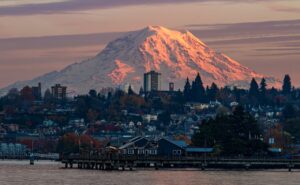Is St. Paul, MN a Good Place to Live? 10 Pros and Cons of Living in St. Paul

St. Paul, MN, the “Twin City” counterpart to Minneapolis, presents a unique blend of urban sophistication and Midwestern charm. But is St. Paul a good place to live? Situated along the majestic Mississippi River, St. Paul offers residents various cultural experiences, from historic landmarks to vibrant neighborhoods. However, alongside its undeniable charm, St. Paul has its challenges such as freezing winters. In this Redfin article, we’ll explore the pros and cons of living in St. Paul to help you decide if it’s the right place for you.
Interested in moving to St. Paul? Check out:
Homes for sale in St. Paul, MN | Apartments for rent in St. Paul, MN | Houses for rent in St. Paul, MN
Quick Facts about St. Paul
Median home sale price
$297,500
Average monthly rent
$1,532
Walk Score
91/100
Bike Score
70/100
1. Pro: Rich cultural heritage
St. Paul has a rich cultural heritage that is evident in its numerous museums, theaters, and historical landmarks. The Minnesota History Center offers a deep dive into the state’s past, while the Science Museum of Minnesota provides interactive exhibits for all ages. The city also hosts the annual Saint Paul Winter Carnival, a tradition that dates back to 1886 and features ice sculptures, parades, and other winter activities. This cultural richness makes St. Paul a good place to live.
2. Con: Very cold winters
One of the significant drawbacks of living in St. Paul is the freezing winter weather. The city experiences heavy snowfall and frigid temperatures that can drop below zero degrees Fahrenheit. This can make commuting difficult and outdoor activities less enjoyable during the winter months. You’ll want to prepare your home for winter in St. Paul, as residents often have to prepare their homes by insulating pipes and cleaning gutters.
3. Pro: Beautiful green spaces
St. Paul is home to an array of beautiful parks and green spaces that offer residents a chance to enjoy the outdoors. Como Park, for example, features a zoo, conservatory, and a picturesque lake. You’ll also want to check out The Mississippi National River and Recreation Area which provides opportunities for hiking, boating, and bird-watching.
4. Con: Limited nightlife
While St. Paul has a variety of cultural attractions, its nightlife options are somewhat limited compared to neighboring Minneapolis. The city has fewer bars, clubs, and late-night dining options, which can be a downside for those who enjoy an active nightlife.
5. Pro: Strong educational institutions
St. Paul is home to several prestigious educational institutions, including the University of St. Thomas and Macalester College. These schools offer a range of undergraduate and graduate programs and contribute to the city’s intellectual and cultural life. The presence of these institutions also means that residents have access to various lectures, performances, and other educational events.
6. Con: High property taxes
One of the financial downsides of living in St. Paul is the high property taxes. Ramsey County, which includes St. Paul has a property tax rate higher than the state and national averages. These taxes are used to fund public services, but they can make homeownership more expensive and less attractive for some residents.
7. Pro: Thriving local food scene
St. Paul has a thriving local food scene that offers a diverse range of culinary experiences. The city is known for its farmers’ markets, such as the St. Paul Farmers’ Market, which features fresh, locally-sourced produce. Additionally, St. Paul is home to a variety of restaurants that serve everything from traditional American fare to international cuisine, such as Ngon Vietnamese Bistro, making it a food lover’s paradise.
8. Con: Commuting delays
Traffic congestion can be a significant issue in St. Paul, particularly during rush hours, such as the morning and evening commutes. The city’s road infrastructure, including major thoroughfares like Interstate 94 and Snelling Avenue, struggles to accommodate the increasing volume of vehicles, resulting in frequent traffic jams and delays. This can make commuting stressful and time-consuming, especially for those who work in or travel to neighboring Minneapolis
9. Pro: Welcoming community
St. Paul boasts a welcoming community, evident in its numerous neighborhood events and volunteer opportunities that foster a sense of belonging. Residents often come together for events like the annual Grand Old Day celebration on Grand Avenue, showcasing the city’s inclusive spirit.
10. Con: Limited job market
While St. Paul has a diverse economy, the job market can be limited compared to larger metropolitan areas like neighboring Minneapolis. The city has fewer large corporations and industries, which can make it challenging for job seekers, particularly in specialized fields. This limitation can necessitate commuting to Minneapolis or other nearby cities for better employment opportunities.
Methodology: The median home sale price and average monthly rental data is from the Redfin Data Center. The Walk Score, Transit Score and Bike Score data is from Walk Score.
The post Is St. Paul, MN a Good Place to Live? 10 Pros and Cons of Living in St. Paul appeared first on Redfin | Real Estate Tips for Home Buying, Selling & More.







